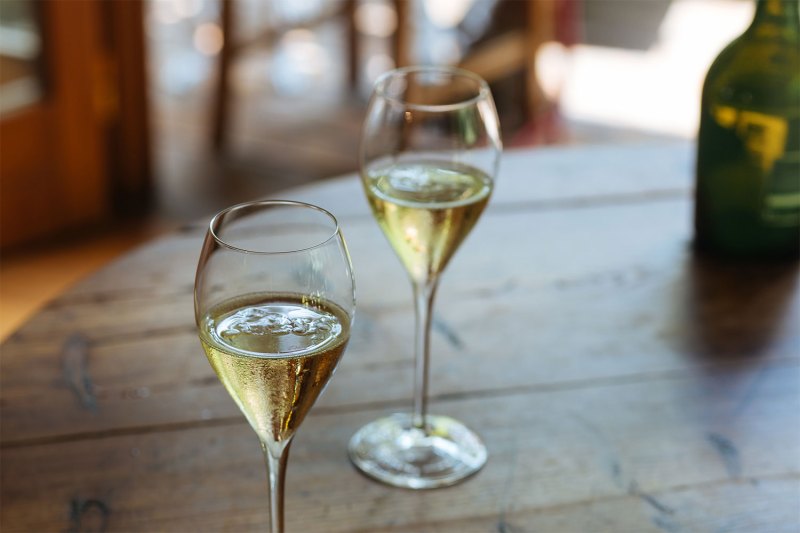Glera might just be the most popular wine grape you know nothing about. As the main ingredient in Prosecco, it’s planted all over Italy and makes its way into many bottles of your favorite Mediterranean fizzy wine.
On the vine, Glera is a verdant green hue, late-ripening with relatively high yields. While its most famous home is Italy (and simply called the Prosecco grape there, depending on what region you’re in), the grape is also grown in places like the U.S. and Australia. In fact, it most likely originated across the border in Slovenia before making its way to the Veneto region of Italy. Presently, it’s assumed that there are several subspecies of the grape, adding even more complexity to the subject.

As a fairly neutral grape with nice acid retention, Glera is perfect for sparkling. Which is why its primary role is in the effervescent frizzante wines as well as the full-fledged sparkling wines otherwise known as spumante. The name Prosecco refers to a town on the outskirts of Trieste, in the deep northeast corner of Italy where the wine was first concocted. But in short, if you see the Prosecco DOC name on a bottle, you’re going to be drinking primarily Glera juice.
The Glera grape has a number of synonyms, the most popular likely being Serpino. While some believe the grape’s only destiny is under cap and fizz, it can produce in more traditional ways. There are rare cases of non-sparkling or still Glera. It’s made like a traditional white, often in stainless steel and finishing with a relatively low alcohol content. Fans appreciate the peach-y flavors and soft, inviting aromatics, great with things like fish and a big chunk of fresh parmesan.
Earlier this year in May, the Italian government approved a spinoff of its famous bubbles in Prosecco Rosé. It will be made primarily of the Glera grape, with the addition of Pinot Nero (making up 10-15% of the blend) for some color. The DOC approval seems long overdue, especially considering the immense popularity of pink wines, but the wheels of the Old World wine designation system tend to spin quite slowly. In short, there’s a lot of traditionalism at play and what’s considered new is often vetted thoroughly. It’s a blessing and a curse for the wine drinking community.
Classifying Glera in its most popular form, Prosecco wine, is a little complex. There are several tiers, separated by production levels, regional distinctions, specific grape requirements, etc. The good folks over at Wine Folly have a nice visual in case you’re curious.
Those in the know tend to praise Prosecco’s texture, not just in terms of flavor balance and overall integration, but the feel of the bubbles. Unlike Champagne, the stuff is typically produced in high-pressure tanks, creating ample CO2. Proponents say it retains the flavors and yeast-y complexity of the process — something that can be lost or at least dampened by a different cellar process.
Of the many types of sparkling wine out there, Prosecco is one of the most approachable. Some of that is owed to a dialed-in process but a lot of credit should go to the unsung hero in the Glera grape.
Editors' Recommendations
- Everything you ever wanted to know about Pinot Grigio, the perfect sipping wine
- Don’t make this super common mistake when chilling wine in an ice bucket
- Here’s all you need to know about brisket: A comprehensive guide
- Wine 101: Everything you ever wanted to know about pinot noir
- The 8 best rum cream liqueurs you need to know about


